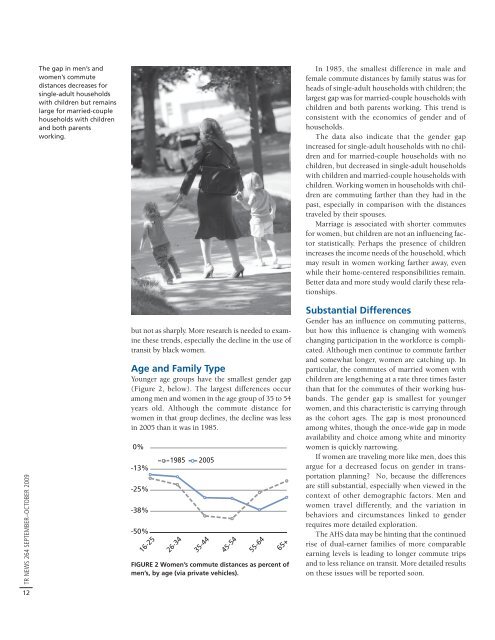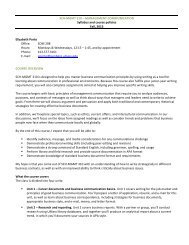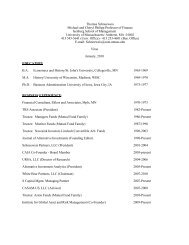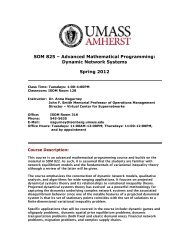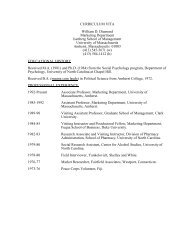TR News - Transportation Research Board
TR News - Transportation Research Board
TR News - Transportation Research Board
- No tags were found...
Create successful ePaper yourself
Turn your PDF publications into a flip-book with our unique Google optimized e-Paper software.
The gap in men’s andwomen’s commutedistances decreases forsingle-adult householdswith children but remainslarge for married-couplehouseholds with childrenand both parentsworking.In 1985, the smallest difference in male andfemale commute distances by family status was forheads of single-adult households with children; thelargest gap was for married-couple households withchildren and both parents working. This trend isconsistent with the economics of gender and ofhouseholds.The data also indicate that the gender gapincreased for single-adult households with no childrenand for married-couple households with nochildren, but decreased in single-adult householdswith children and married-couple households withchildren. Working women in households with childrenare commuting farther than they had in thepast, especially in comparison with the distancestraveled by their spouses.Marriage is associated with shorter commutesfor women, but children are not an influencing factorstatistically. Perhaps the presence of childrenincreases the income needs of the household, whichmay result in women working farther away, evenwhile their home-centered responsibilities remain.Better data and more study would clarify these relationships.<strong>TR</strong> NEWS 264 SEPTEMBER–OCTOBER 2009but not as sharply. More research is needed to examinethese trends, especially the decline in the use oftransit by black women.Age and Family TypeYounger age groups have the smallest gender gap(Figure 2, below). The largest differences occuramong men and women in the age group of 35 to 54years old. Although the commute distance forwomen in that group declines, the decline was lessin 2005 than it was in 1985.0%–13%–25%–38%–50%16-251985 200526-3435-4445-5455-6465+FIGURE 2 Women’s commute distances as percent ofmen’s, by age (via private vehicles).Substantial DifferencesGender has an influence on commuting patterns,but how this influence is changing with women’schanging participation in the workforce is complicated.Although men continue to commute fartherand somewhat longer, women are catching up. Inparticular, the commutes of married women withchildren are lengthening at a rate three times fasterthan that for the commutes of their working husbands.The gender gap is smallest for youngerwomen, and this characteristic is carrying throughas the cohort ages. The gap is most pronouncedamong whites, though the once-wide gap in modeavailability and choice among white and minoritywomen is quickly narrowing.If women are traveling more like men, does thisargue for a decreased focus on gender in transportationplanning? No, because the differencesare still substantial, especially when viewed in thecontext of other demographic factors. Men andwomen travel differently, and the variation inbehaviors and circumstances linked to genderrequires more detailed exploration.The AHS data may be hinting that the continuedrise of dual-earner families of more comparableearning levels is leading to longer commute tripsand to less reliance on transit. More detailed resultson these issues will be reported soon.12


